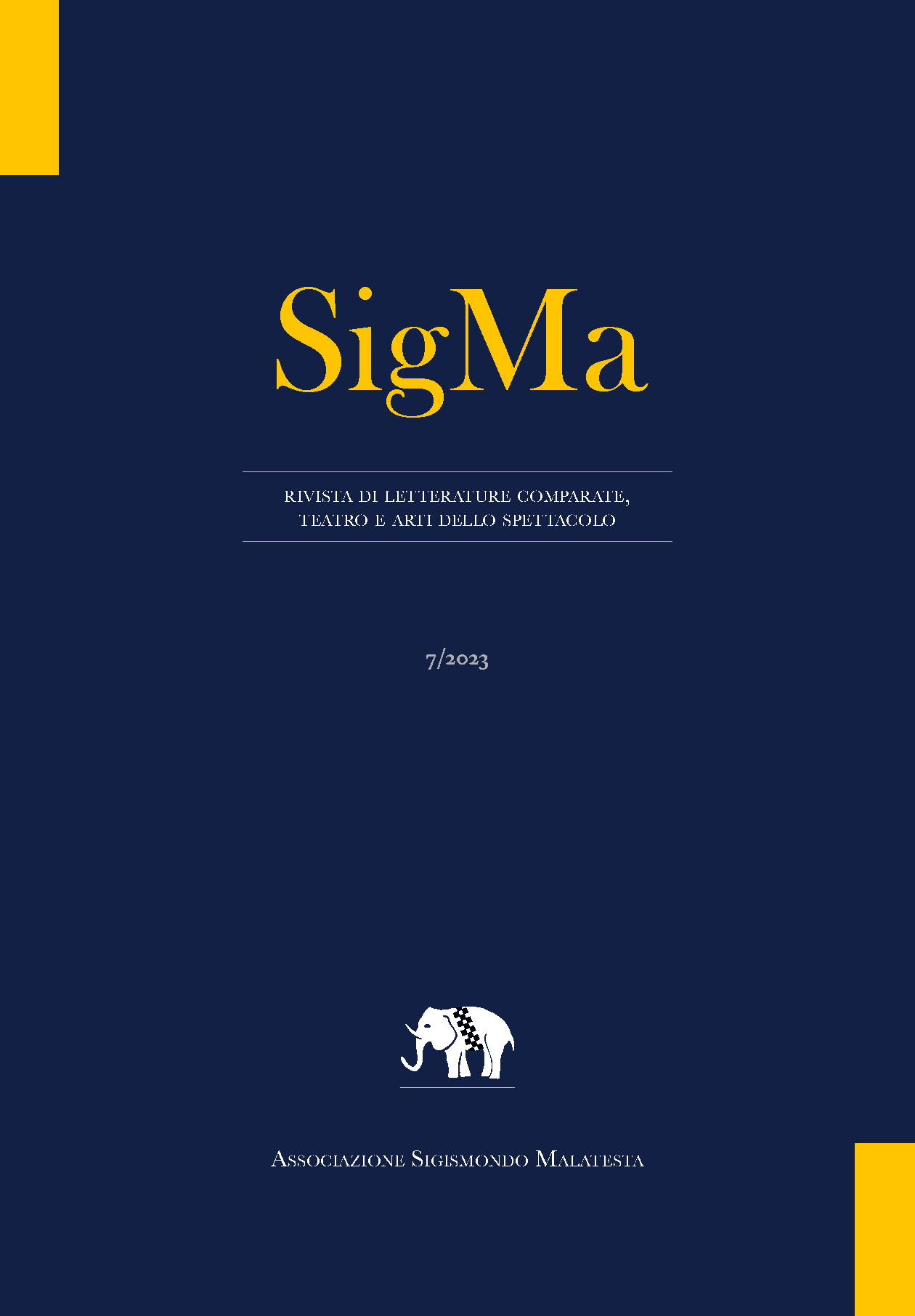Il pensiero nomade ne ‘Le transizioni’ di Pajtim Statovci
Abstract
Il contributo si propone di esplorare i temi contenuti nel racconto dell’Esodo, intesi come figure di lunga durata nella tradizione occidentale, tramite l’indagine di un esempio letterario contemporaneo: il romanzo Le transizioni di Pajtim Statovci. L’analisi mira a dimostrare come il romanzo rifletta il pensiero nomade, di matrice deleuziana, attraverso una reinterpretazione dei passaggi dell’Esodo condotta mediante la lente filosofica di Walzer; ne emerge un’opera che riflette profondamente sulla natura dell’identità, in una prospettiva influenzata dal pensiero di Nietzsche che permea l’intera narrazione e offre una visione complessa delle trasformazioni umane e sociali. In particolare, si esamina la concordanza tra romanzo e racconto biblico alla luce della lettura proposta da Walzer nel suo saggio Esodo e rivoluzione; e attraverso la prospettiva della “filosofia della differenza” formulata da Deleuze, che considera il “pensiero nomade” come un’entità comune a qualsiasi “soggetto minoritario”, aggettivo, quest’ultimo, che riguarda tanto i personaggi di Statovci, quanto il popolo di Israele durante l’Esodo. I soggetti minoritari sono quelli che si spostano, sono quelli che reiterano l’Esodo, che per propria natura nomade sono in movimento – anche solo col pensiero. Questi soggetti sono coloro che innervano la differenza nel nostro mondo, caratterizzano l’eterogeneità e agevolano l’evoluzione della società umana, poiché “Non vi è divenire se non minoritario” (Deleuze, Guattari, ed. 2003: 170). Di evoluzione, nel senso di passaggio da una condizione di popolo nomade a una di nazione, racconta l’Esodo biblico illustrato da Walzer; nel suo testo l’Esodo è un modello, una storia che rende possibile la narrazione di altre storie; come accade per il romanzo che andremo a raccontare. Attraverso il protagonista, Bujar, lo scrittore esplora il concetto di “divenire” come nucleo centrale dell’identità. Bujar è presentato come “diveniente”, tale concetto suggerisce un processo di costante cambiamento e creazione, sfidando le nozioni tradizionali intorno all’identità del soggetto. Nel contesto del romanzo, questo divenire è reso complesso dall’interazione con Agim, co-protagonista e figura cruciale nel racconto. Statovci – senza esplicitarlo, ed è questa una delle proposte di lettura del saggio – alterna le voci narrative dei due personaggi, sottolineando una metamorfosi nascosta: Bujar diviene Agim. Ciò genera ambiguità narrative, che trovano spiegazione solo alla fine. Il legame tra i due personaggi e il viaggio che intraprendono assumono dimensioni simboliche, richiamando la narrazione esodica, in cui Agim presenta tratti che richiamano il ruolo di Mosè e, come il profeta, è destinato a morire prima di arrivare alla “terra promessa”.
Downloads
SigMa pubblica in internet, ad accesso aperto, con licenza:
|
|
CCPL Creative Commons Attribuzione |
L'autore conserva il copyright sul suo contributo, consentendo tuttavia a chiunque "di riprodurre, distribuire, comunicare al pubblico, esporre in pubblico, rappresentare, eseguire e recitare l'opera", purché siano correttamente citati l'autore e il titolo della rivista. L’autore, al momento della proposta di pubblicazione, è inoltre tenuto a dichiarare che il contenuto e l’organizzazione dell’opera è originale e non compromette in alcun modo i diritti di terzi, né gli obblighi connessi alla salvaguardia di diritti morali ed economici di altri autori o di altri aventi diritto, sia per testi, immagini, foto, tabelle, sia per altre parti di cui il contributo può essere composto. L’autore dichiara altresì di essere a conoscenza delle sanzioni previste dal codice penale e dalle leggi speciali per l’ipotesi di falsità in atti ed uso di atti falsi, e che pertanto Reti Medievali è esente da qualsiasi responsabilità di qualsivoglia natura, civile, amministrativa o penale, e sarà dall'autore tenuta indenne da qualsiasi richiesta o rivendicazione da parte di terzi.

